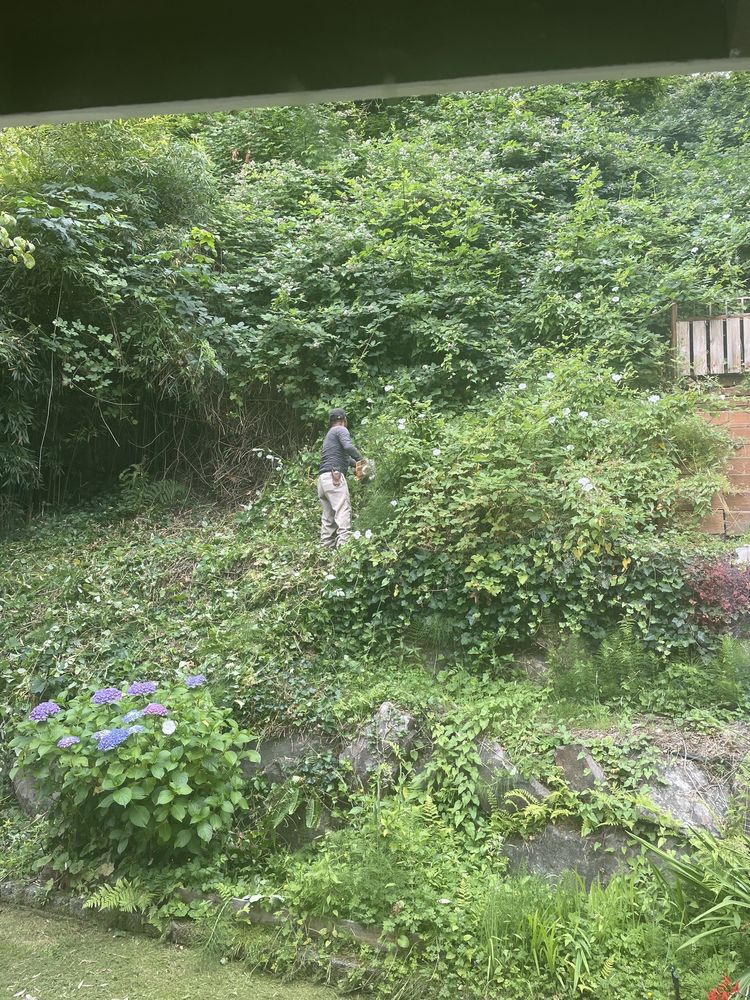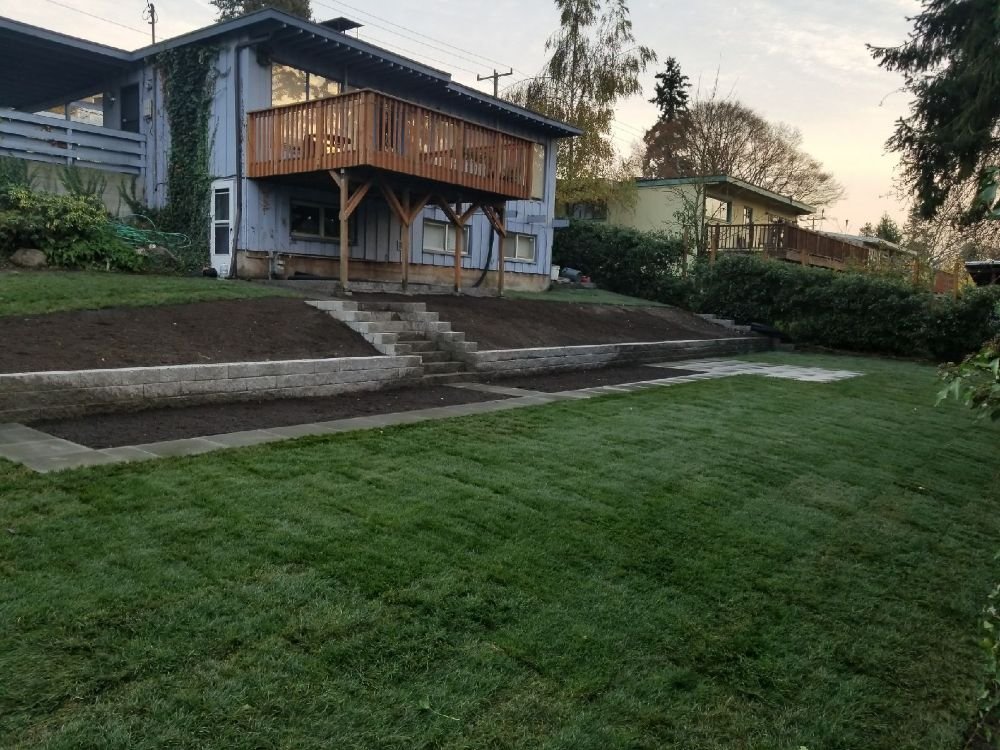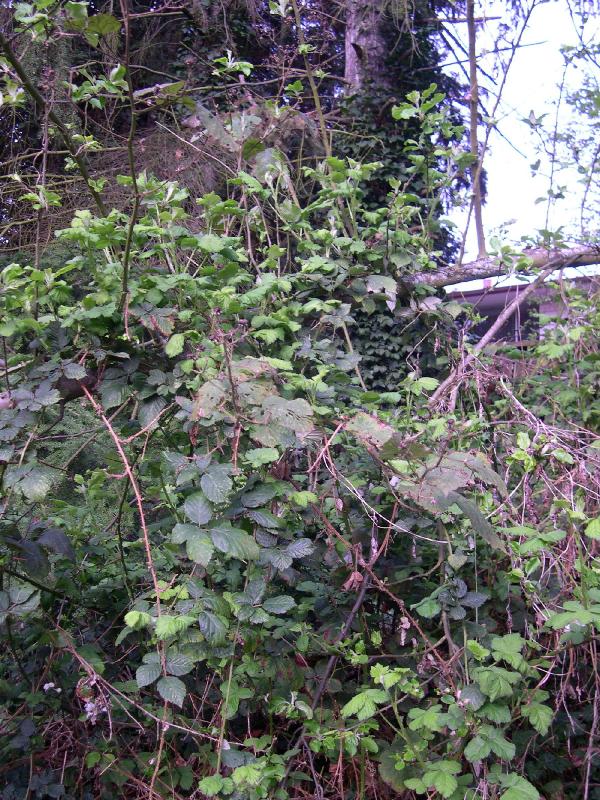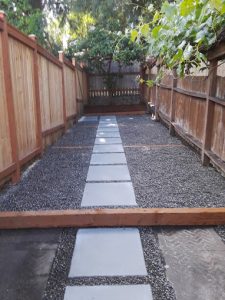These aren’t your grandma’s harmless blackberries
These invasive, thorny species can overrun your yard, posing a threat to your loved ones, pets, and even your own safety if left unchecked. As someone who’s battled blackberry and vine overgrowth in Seattle, I can attest to their lightning-fast spread.
But be warned: removal is no easy feat – it’s a labor-intensive, physically demanding process. Yet, trust me, the reward is well worth the struggle: reclaiming your outdoor oasis and restoring peace to your property!
Summary Notes:
- Blackberry bushes: Fast-growing, thorny shrubs known for their aggressive spread and difficulty to remove.
- Invasive species: Non-native plants that spread rapidly and cause harm to native ecosystems or properties.
- Removing blackberry and vine overgrowth restores your yard, increases property value, and reduces safety risks.
- Manual removal is labor-intensive and time-consuming.
- Outsourcing to professionals like Lees General Landscaping is efficient, safe, and cost-effective.
Hiring a professional landscaper is like calling a plumber: You could try to fix it yourself, but they have the tools and experience to get it done faster and more effectively.

Benefits of Removing Blackberries and Vines:
- Bring back your yard’s natural beauty: Overgrowth can choke out your landscape, but removing it will restore the clean, open space you once had.
- Boost property value: A neat, well-kept yard not only looks better, but it also makes a positive impact on your home’s market value.
- Enhance your outdoor living space: Once you’ve cleared the mess, you’ll have more room to garden, entertain, or just relax outdoors.
- Reduce injury risk: Blackberry thorns and sprawling vines can be a hazard, especially for kids. Clearing them out makes your yard safer.
- Create room for new plants: With the blackberries gone, you’ll have space to plant new flowers, trees, or garden beds that can really thrive.
Why Remove Blackberries and Vines?
- Prevent property damage: Blackberry bushes and vines can cause real harm when they grow too close to fences, decks, or even your home’s foundation.
- Avoid an eyesore: Let’s face it—tangled blackberry bushes don’t look great. Removing them boosts your curb appeal.
- Keep pests away: Dense overgrowth is a perfect hiding spot for rodents and pests, and it can trigger allergies too.

The Challenge of Removing Them:
- It’s hard physical work: Digging out blackberries and vines is no small task—it requires a lot of effort.
- Risk of injury: Those thorns can be nasty, and it’s easy to trip on long, tough vines while you work.
- It takes time: Clearing a small patch is one thing, but larger areas can take days or even longer.
- Special tools may be needed: For big jobs or dense growth, specialized equipment like brush cutters or mulchers might be necessary to make the job manageable.
| Option | Pros | Cons |
|---|---|---|
| Self-Service (DIY) |
|
|
| Outsourcing (Professional Service) |
|
|
| Not Addressing the Issue |
|
|
Choosing Lee’s General Landscaping ensures that your blackberry and vine removal is done right. You’ll regain control of your outdoor space without the hassle.
Invasive Blackberry and Vine Species in Seattle
Seattle’s notorious blackberry issue primarily comes from the Himalayan blackberry. Though not technically a vine, it grows aggressively and can form thick, impenetrable patches.
- Himalayan blackberry (Rubus bifrons or R. armeniacus): A perennial shrub that can grow up to 15 feet tall, armed with sharp thorns. It crowds out native plants and creates dense thickets.

Other Invasive Species in Seattle:
- English ivy: An evergreen vine that can strangle trees and plants.
- Field bindweed: A vine that forms dense ground mats and climbs other plants.
- Hedge bindweed: A vine with arrow-shaped leaves, growing up to 10 feet long.
- Old Man’s Beard: A fast-growing vine with white or pink flowers, growing up to 20 feet.
- Poison-hemlock: A tall plant with fern-like leaves, toxic to humans.
- Tansy ragwort: A yellow-flowered plant growing up to 6 feet, toxic to livestock.
- Giant hogweed: Can grow up to 15 feet tall, with large umbrella-like leaves.
- Knotweed: A perennial plant that grows up to 10 feet tall and disrupts local ecosystems.
- Garlic mustard: A biennial plant with triangular leaves that outcompetes native plants.

Why Outsource to Lee’s General Landscaping:
- We’re experienced: With years of hands-on landscaping experience, we know exactly how to handle invasive plants and restore your yard quickly and safely.
- We have the right equipment: Our professional-grade tools allow us to tackle even the toughest growth efficiently, saving you a lot of time and energy.
- We know what we’re doing: Our staff is knowledgeable and can identify invasive species, making sure they’re removed properly to prevent regrowth.
- We’re affordable: With competitive pricing, you’ll get comprehensive removal services without breaking the bank.
- We save you time and hassle: Let us handle the tough, dirty work so you can focus on other things—or just enjoy your newly cleared space.
Additional Tips:
- Wear protective gear: Gloves, long sleeves, safety glasses—protect yourself from scratches and sharp thorns.
- Cut back before pulling out: Trim the blackberries and vines down to ground level first. This makes the removal process much easier.
- Get help for larger areas: If the overgrowth is out of control or your property is large, let us handle it. We have the equipment and manpower to clear it quickly.
- Plan for maintenance: Even after removal, blackberries and vines can come back if not maintained. Having a follow-up plan will help keep your yard clear.
We’ve got your back
By choosing Lee’s General Landscaping, you’re putting your yard in the hands of a reliable, expert team. We’ll take care of your blackberry and vine removal efficiently and safely, giving you a beautifully restored yard without the hassle.


















